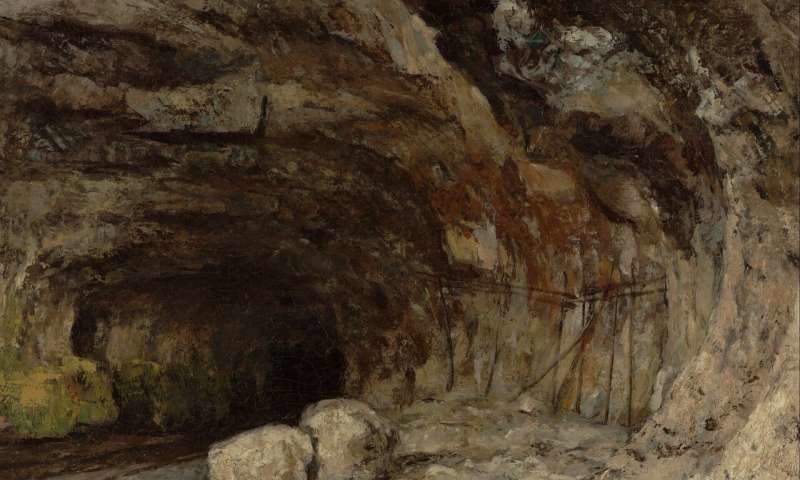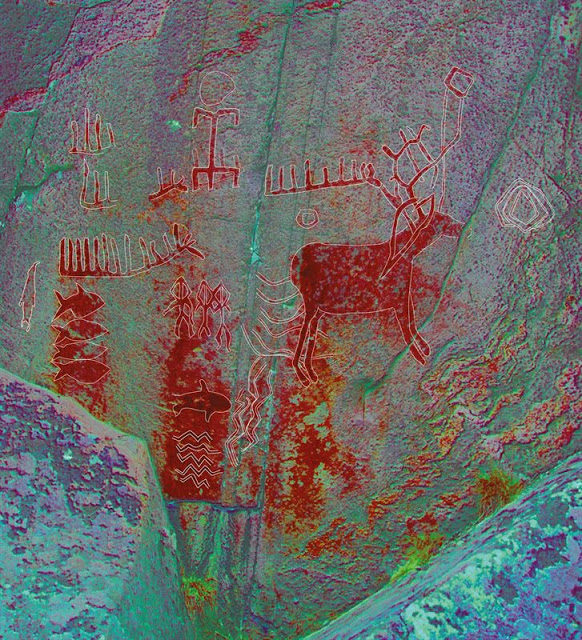Archaeology students from the University of Gothenburg have been visiting Tumlehed on excursions for many years. There — in the Gothenburg suburb of Torslanda, on the island of Hisingen and barely 15 kms from the center of the city — lies the best-preserved and most complex prehistoric rock painting in south-west Sweden.
Archaeologist Bettina Schulz Paulsson was inspired to test the methods she wanted to use for a project on megalithic art in Europe (in a previous project she charted the origins of megalith graves and how they spread across Europe — a discovery that earlier this year was published in the high-ranking journal PNAS) on the rock painting in Tumlehed.
"I wanted to test the method I used for my last project at a site in my local area and it ended up generating spectacular results!" says Bettina Schulz Paulsson.
In recent years, what we know about prehistory has undergone quite a change thanks to ever-advancing technological development. Today, there are new technologies for documenting and analysing rock paintings that are many thousands of years old.
This technology has made it possible for the first time to date the rock painting in Tumlehed. It is from the late Stone Age and was painted some time between 4200-2500 years BCE by mobile hunters who had come by boat to the west coast of Sweden to hunt seal and whales.
Many motifs previously unknown in the area were discovered, the most important of these being pictographs of boats with elk-head stems — motifs that have only been found before in Finland, Russia, the north-east of Norway and northern Sweden.
"These findings confirmed my theories of seafaring in the Stone Age," says Bettina Schulz Paulsson.
The new technologies used on the Tumlehed rock painting included the digital image enhancing program Dstretch, which was originally developed by NASA and is being increasingly used in rock art research. It was used to digitally enhance symbols that are no longer visible to the naked eye.
Using portable X-ray fluorescence (PXRF) spectroscopy, the basic chemical composition of the pigment used in the motifs was also determined, and this gave the researchers data which revealed that different batches of paint had been used for some of the motifs. This suggests at least two separate episodes of producing the rock painting.
A student, Fredrik Frykman Markurth, was also part of the project and completed the initial PXRF measurements.
"This study is a collaboration between well-established researchers and a student, and is a very good example of research-driven teaching," says Christian Isendahl, senior lecturer in archaeology.
The most important findings from the study were the new motifs that emerged showing boats with elk-head stems.
"Elk-head boats are often associated with hunting and fishing scenes, and we have interpreted the motifs in Tumlehed as three elk-head boats related to a small whale, a seal and four fish," says Bettina Schulz Paulsson.
The Tumlehed rock painting indicates similar maritime voyages during the Stone Age that are culturally connected to the peoples of eastern and northern Fennoscandia, an area that covers Norway, Sweden, Finland, the Kola Peninsula and Russian Karelia.
"Deer, reindeer and elk are frequent depicted motifs in Fennoscandian rock art. These species were important game for hunting but may also have had important symbolic and spiritual roles for these societies," says Bettina Schulz Paulsson.
The study entitled Elk Heads at Sea: Maritime Hunters and Long‐Distance Boat Journeys in Late Stone Age Fennoscandia has been published in the November issue of the Oxford Journal of Archaeology.
More information: Bettina Schulz Paulsson et al. Elk Heads at Sea: Maritime Hunters and Long‐Distance Boat Journeys in Late Stone Age Fennoscandia, Oxford Journal of Archaeology (2019).
DOI: 10.1111/ojoa.12180
Journal information: Proceedings of the National Academy of Sciences , AGE , Oxford Journal of Archaeology





Comment: See also: